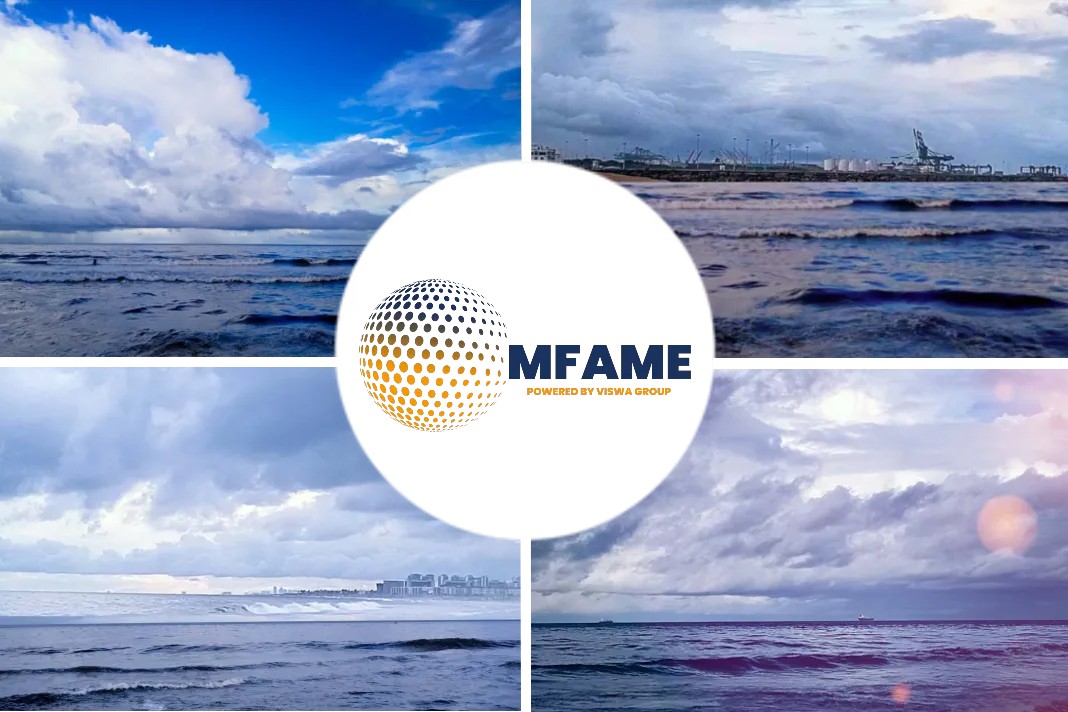Mitsui OSK Lines, Japan’s largest shipowner, has unveiled an updated device to collect microplastics.
Centrifugal-type microplastic collection device
The centrifugal-type microplastic collection device, developed in association with local tech firm Miura, can continuously collect debris from the sea. A device has been installed on an MOL-operated car carrier Emerald Ace for a demonstration test.
An earlier system developed by the two partners has already been installed on five MOL ships, with MOL able to convert some of the rubbish it has picked up into energy resources similar to wood pellets.
The addition of a centrifuge allows the device to efficiently separate floating microplastics from concentrated seawater with a high density of floating debris, without closed plumbing. This enables it to treat sea water line, which continually draws in seawater, and even treat the full amount of discharge water after passing through the filter with the backwashing function of the ballast water treatment system, which was limited to a part of treatment in the previous device.
3D designs to collect microplastics
On the Emerald Ace, microplastics can be continuously collected while sailing, by connecting the system to the cooling seawater line, which always draws in seawater. This gives the system an annual seawater treatment capacity about 70 times that of the previous device.
There’s plenty of other plastic waste initiatives being carried out by the shipping industry at the moment. New York-based H2-Industries and German naval architects TECHNOLOG Services have joined forces to develop 3D designs for a concept ship that will collect plastic waste and then converts it into clean hydrogen, allowing surplus hydrogen to be shipped back to shore.
Maersk vessels, meanwhile, have been instrumental in the ongoing work of The Ocean Cleanup, a non-profit organisation that develops and scales technologies to rid the world’s oceans of plastic and has been working with the Danish line to attack the Great Pacific Garbage Patch.
Exhaust gas scrubber washwater to tackle microplastics
In February this year Finnish technology group Wärtsilä and Italian shipowner Grimaldi Group, unveiled a system that uses exhaust gas scrubber washwater to tackle the amount of microplastics in the world’s oceans. Grimaldi has developed and patented a system that filters out microplastics from open loop scrubber washwater.
Wärtsilä, in partnership with the Neapolitan group, will take the microplastics filtration system – which traps plastic particles before the washwater is returned to the ocean – to market. The capability to filter microplastics will be an integrated feature of Wärtsilä’s future wash-water treatment system.
Many in shipping have backed Graeme Somerville-Ryan’s Eyesea pollution mapping initiative. The Eyesea app collects and processes oceanic pollution data via the click of a smartphone. The data is used to build detailed maps and charts available free of charge to governments, clean-up groups, researchers, local authorities and a range of other stakeholders, enabling them to take targeted clean-up action and make evidence-based policy decisions.
Did you subscribe to our daily Newsletter?
It’s Free! Click here to Subscribe
Source: MOL























